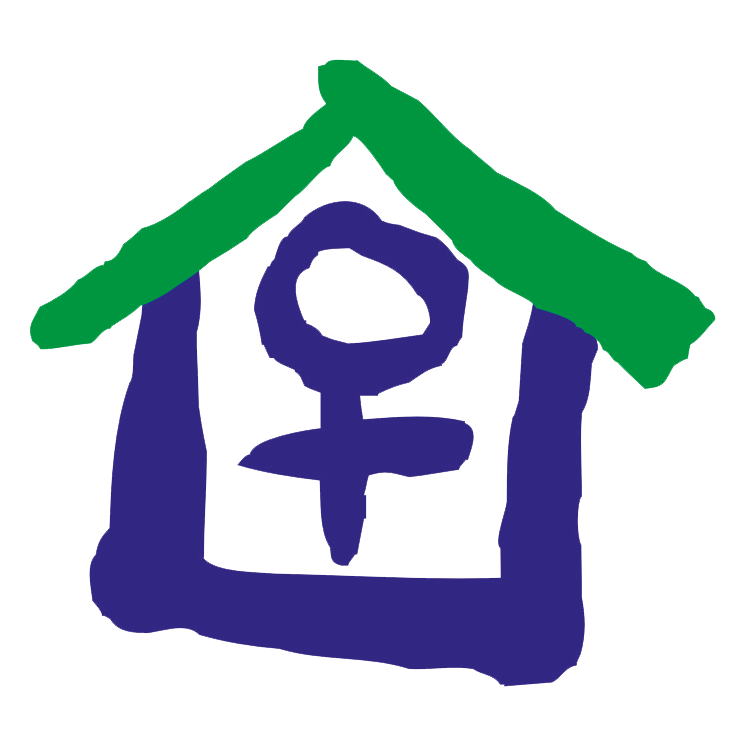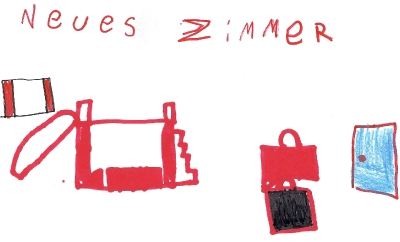The Women’s Home is a facility where women who are physically or mentally threatened or ill-treated by their partner or by family and close relatives find refuge and shelter with their children. The addresses of women’s shelters are secretive for the safety of women.
The way to the women’s shelter
The women’s shelter is accessible day and night.
The staff members are available Monday to Friday from 09.00-17.00.
Outside the office hours, the residents of the house take the phone calls.
The telephone numbers of women’s shelters are publicly available, d. H. they are in the flyer of the women’s shelter, in phone books, on the internet etc.
Also the help telephone violence against women 08000 116 016 can give information.
Advice for deaf women:
The admission and accommodation happens fast and uncomplicated. In the women’s shelter, women, with and without their children, find protection, help and support. All women regardless of their nationality, residence status, religion, skin color or sexual orientation are welcome !!! Should the women’s shelter be fully occupied, the staff will try to find another refuge for women. Before going to a women’s shelter, it makes sense to take the most important documents and documents with you. (See SOS button) If at present the step into a women’s shelter is not yet possible, it makes sense to create a personal safety plan. The security plan can provide more security and control in acute crisis situations.
If at present the step into a women’s shelter is not yet possible, it makes sense to create a personal safety plan. The security plan can provide more security and control in acute crisis situations.
Wenn Sie in einer Gewaltbeziehung leben, ist es sinnvoll, einen persönlichen Sicherheitsplan zu erstellen. Damit sind Sie in einer Krisensituation besser vorbereitet, können sich sicherer fühlen und haben mehr Kontrolle über die Situation.
Als Hilfestellung im Folgenden einige Fragen und Ratschläge:
escape plan
• What is the quickest way to leave your home if your partner threatens you?
• Where can you flee inside your home to protect yourself?
• Which rooms are lockable and offer the possibility to leave the apartment?
Phone
• Do you have a cell phone to call for help?
• Did you save the number of police, doctors and friends in your phone?
Support
• Who could help you in your area?
• Is there, for example, a neighbor who you trust? • Then introduce them to your situation and ask them to call for help when they realize that your husband is violating you.
Children
• Explain the home situation to your children so that they understand it.
• Show them how to call the police in an emergency.
• Explain that it may be necessary to leave the flat.
• Also inform the school and kindergarten about your situation.
• Have conversations with your children. How are you? What do you wish? • Worry your children of being responsible for the violence.
Key
Leave a bunch of keys with all the important keys (apartment, car, etc.)
imitate him and keep him in a safe place (for example, with a friend or at
Relatives).
Documents, passbooks, other valuables
Emergency bag
Accommodation
• Ask a person who you trust, e.g. a friend or relative, if you can come to her in an emergency.
Of course, you can also call the women’s shelter at any time of the day or night.
• It is best to save the number in your mobile phone: 04121/25895
If possible, mothers and their children have their own room. Women without children need to share a room with other women. Kitchens, bathrooms, living rooms and other common areas are shared by all residents of the women’s shelter.
In the house there are also office and consultation rooms, in which the employees offer advice and support for the further life organization and planning.
So that new residents can find their way around the house quickly, we have developed a house rules. It also anchors the basic principles of living together: Life in the women’s shelter is non-violent. This means that even in conflicts no violence against oneself, against other women or against the children may be applied. Life in the house is alcohol and drug free. With our help, women with an addiction problem can be placed in a specialized counseling center or clinic so that they can live in the home without addiction during or after treatment (detoxification, therapy, counseling). The women’s shelter is a self-help facility and has no home character with “round-the-clock care”. The residents of the women’s shelter provide themselves and their children with their own living and shape their everyday lives independently. Of course you are allowed to leave the women’s refuge at any time. In addition, each resident takes on certain tasks for the household, e.g. Telephone services at night and on weekends (outside office hours) and cleaning of common areas. The distribution of services and living together in the house is organized in regular house meetings. There are no common and binding meal times, but every woman cooks for herself and her children. But of course it is possible to cook, work and leisure together with other women. The target group of the women’s shelter consists of women and children of different faiths who speak different languages, differ in age or health, have different levels of education, residence status and financial or social resources. In addition, women meet here with different educational styles, concepts of gender roles, etc. The community-oriented interior design of the women’s refuge requires tolerance and understanding of other ways of life. On the other hand, it offers women the opportunity to talk to other women in a similar situation, to exchange ideas and to support each other. Solidarity and friendship often arise from shared concern – even beyond the women’s refugee residence.
Children in the women’s shelter
A women’s shelter is always a shelter for the girls and boys who seek refuge there with their mothers. In the Frauenhaus Elmshorn, girls without age limits and boys up to the age of 12 are taken in with their mothers. Older boys can be accommodated during the refuge home stay in a nearby child shelter. The age limit of boys is based on the spatial conditions of the women’s shelter. Due to tight living conditions and the common use of the bathroom, the necessary privacy is not guaranteed. It is sometimes said that staying in the women’s shelter is not for the benefit of the child. That is a mistake! Children are respected in the women’s shelter as their own personalities and subjects, their needs and perceptions are taken seriously and included in decisions. The girls and boys therefore have their own contact persons among the employees. These listen to them, if they want to talk about what they have experienced, help with problems and conflicts, take their time and take sides.
Girls and boys of school age participate regularly in the children’s house meeting. There, all matters important to the children can be discussed. Domestic violence is not a taboo. Opening up to other girls and boys who have had similar experiences of violence is often the first step in dealing with the experience.
The aim of this work is to create a fearless and non-violent atmosphere in which the girls and boys feel safe and have positive experiences.
In addition, the staff from the children’s area advise the mother, if necessary, in questions of education or with regard to the right of care and access. Any form of violence as an educational method is prohibited in the women’s shelter.
Impressum | SOS | Datenschutz










